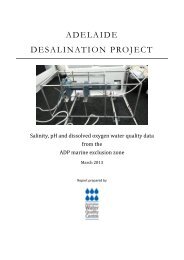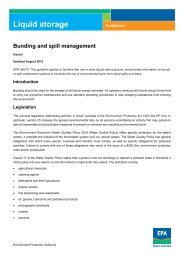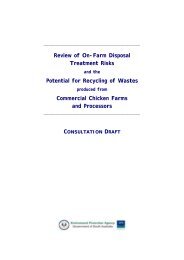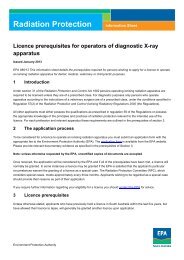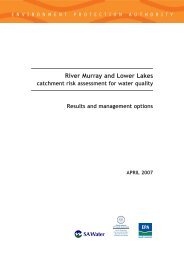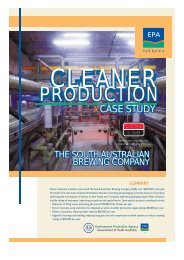Guidelines for Establishment and Operation of Cattle Feedlots in ...
Guidelines for Establishment and Operation of Cattle Feedlots in ...
Guidelines for Establishment and Operation of Cattle Feedlots in ...
Create successful ePaper yourself
Turn your PDF publications into a flip-book with our unique Google optimized e-Paper software.
Under the Water Resources Act 1997 "…a person must not undertake…us<strong>in</strong>g effluent <strong>in</strong><br />
the course <strong>of</strong> carry<strong>in</strong>g on a bus<strong>in</strong>ess <strong>in</strong> a catchment area at a rate that exceeds the rate<br />
prescribed by the plan". This means that all persons undertak<strong>in</strong>g schemes to use<br />
effluent <strong>in</strong> the course <strong>of</strong> carry<strong>in</strong>g on a bus<strong>in</strong>ess <strong>in</strong> a prescribed water resources area will<br />
need to obta<strong>in</strong> a permit. All effluent used will be metered, <strong>and</strong> a monitor<strong>in</strong>g bore must be<br />
<strong>in</strong>stalled <strong>in</strong>to the upper aquifer <strong>for</strong> observation <strong>of</strong> nutrient <strong>and</strong> water levels. Spread<strong>in</strong>g<br />
effluent heavier than 1 kilolitre per hectare may require a permit. Check the details <strong>for</strong><br />
your area with the relevant Catchment Management Board. Penalties <strong>for</strong> <strong>of</strong>fences are<br />
$5,000 <strong>for</strong> a person or $10,000 <strong>for</strong> a body corporate.<br />
If the EPA suspects on reasonable grounds that an activity is caus<strong>in</strong>g or is likely to<br />
cause environmental harm the Authority may require the person carry<strong>in</strong>g on that activity<br />
to undertake a monitor<strong>in</strong>g <strong>and</strong> report<strong>in</strong>g programme.<br />
The objective <strong>of</strong> feedlot waste utilisation is to employ crops, pastures <strong>and</strong> soils to effectively utilise<br />
or assimilate the nutrients, salts, organic matter <strong>and</strong> water <strong>in</strong> the wastes <strong>in</strong> a susta<strong>in</strong>able manner.<br />
The essential features <strong>of</strong> a susta<strong>in</strong>able waste utilisation system are<br />
nutrients are not leached below the active root zone <strong>of</strong> the crop or pasture. This prevents<br />
contam<strong>in</strong>ation <strong>of</strong> groundwater resources.<br />
dissolved or suspended contam<strong>in</strong>ants are not transported from utilisation areas to<br />
watercourses. This prevents contam<strong>in</strong>ation <strong>of</strong> surface water resources.<br />
effluent <strong>and</strong> manure are not applied excessively. This prevents the degradation <strong>of</strong> the<br />
chemical <strong>and</strong> physical properties <strong>of</strong> the soil which lead to nutrient overload<strong>in</strong>g, sal<strong>in</strong>isation,<br />
sodicity, acidification, erosion, poor <strong>in</strong>filtration <strong>and</strong> waterlogg<strong>in</strong>g.<br />
the productivity <strong>of</strong> the l<strong>and</strong> used <strong>for</strong> waste utilisation is enhanced<br />
neighbour<strong>in</strong>g l<strong>and</strong>holders are not subjected to odour <strong>and</strong> dust nuisance because <strong>of</strong> poorly<br />
timed <strong>and</strong> managed waste application practices.<br />
<strong>Guidel<strong>in</strong>es</strong> <strong>for</strong> <strong>Establishment</strong> <strong>and</strong> <strong>Operation</strong> <strong>of</strong> <strong>Cattle</strong> <strong>Feedlots</strong> <strong>in</strong> South Australia, 2 nd Edition 46




